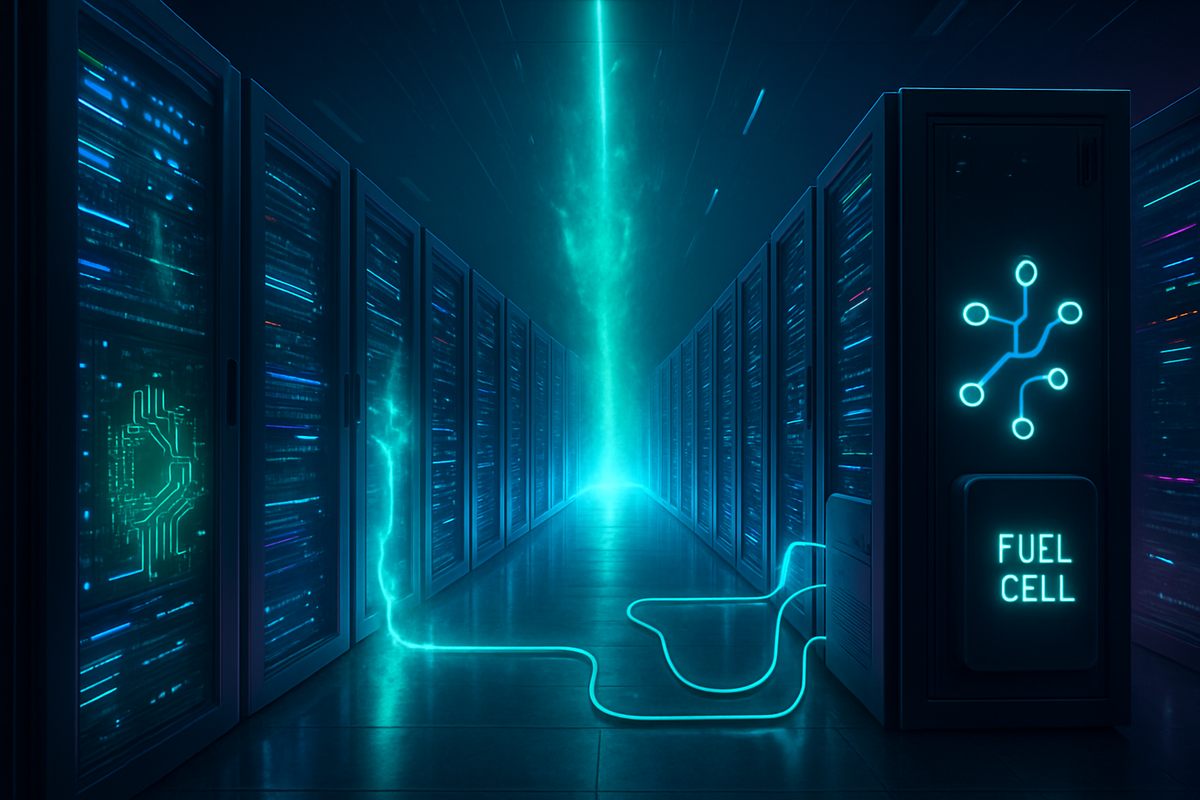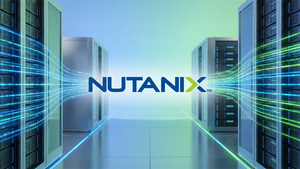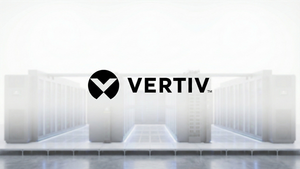
The insatiable demand for Artificial Intelligence (AI) is igniting an unprecedented surge in data center construction and operation, fundamentally reshaping the technology and energy landscapes. This explosion in computational needs is creating immense pressure on existing power grids and driving a critical imperative for advanced efficiency and reliable, scalable energy solutions. At the forefront of this revolution are innovations like Power Integrations' (NASDAQ: POWI) high-voltage Gallium Nitride (GaN) technology, promising superior power efficiency, and Bloom Energy's (NYSE: BE) groundbreaking $5 billion partnership with Brookfield Asset Management (NYSE: BAM), aimed at delivering rapid, on-site power generation for AI factories globally.
This confluence of technological advancement and strategic investment signifies a pivotal moment for the financial markets, with significant implications for semiconductor manufacturers, energy providers, and infrastructure developers. As AI models become more complex and data center rack densities soar, the race to power these digital behemoths efficiently and sustainably is intensifying, creating both immense opportunities and formidable challenges for companies navigating this rapidly evolving sector.
Powering the Future: GaN Innovation and Strategic Energy Partnerships
The current surge in AI data center technology is driven by the sheer computational intensity of modern AI models, particularly in machine learning and deep learning. These models require massive amounts of energy, with global data center electricity consumption projected to more than double between 2022 and 2026. This exponential growth necessitates a dual approach: optimizing power delivery at the component level and securing robust, scalable energy sources at the infrastructure level.
Power Integrations (NASDAQ: POWI) has emerged as a key player in the efficiency race with its advanced high-voltage Gallium Nitride (GaN) chips, specifically its 1250 V and 1700 V PowiGaN technology. Unveiled to address the demanding 800 VDC power systems increasingly adopted in AI data centers, Power Integrations' GaN solutions are designed to deliver greater than 98% efficiency. This surpasses the performance of traditional silicon-based components and even stacked 650 V GaN transistors, significantly reducing energy loss and heat generation. The company's collaboration with NVIDIA (NASDAQ: NVDA) to accelerate the adoption of 800 VDC power architecture for megawatt-scale server racks underscores the critical role of GaN in maximizing power density and minimizing copper usage within these energy-intensive environments. Power Integrations asserts its unique position as the only supplier currently producing high-voltage 1250 V and 1700 V GaN switches in volume, giving it a significant competitive edge in this burgeoning market.
Concurrently, the energy infrastructure challenge is being tackled by Bloom Energy (NYSE: BE) through its monumental $5 billion partnership with Brookfield Asset Management (NYSE: BAM) and its institutional partners. Announced earlier this year, this collaboration aims to deploy Bloom Energy's solid oxide fuel cell technology to provide clean, reliable, and on-site power for AI data centers. The partnership is structured to design, develop, and deliver "AI factories" globally, emphasizing speed and scale in power provision. By generating electricity directly on-site, Bloom's fuel cells reduce reliance on strained traditional power grids, offering a "time-to-power" advantage that bypasses lengthy grid interconnection delays. This is particularly crucial as many jurisdictions face overwhelmed power grids, leading to pauses in new data center contracts. Bloom's fuel cells offer fuel flexibility, capable of running on natural gas, biogas, or hydrogen, providing a pathway towards reduced carbon footprints while ensuring the continuous, high-quality power essential for high-performance computing (HPC) and AI workloads. This strategic alliance represents a significant investment in decentralized energy solutions, directly addressing one of the most pressing bottlenecks in AI infrastructure development.
Winners and Losers in the AI Power Play
The AI data center surge, coupled with these technological and strategic advancements, is creating clear winners and losers across the financial landscape. Companies at the forefront of power efficiency and sustainable energy solutions stand to gain significantly.
Power Integrations (NASDAQ: POWI) is poised for substantial growth. Its leadership in high-voltage GaN technology places it squarely in the path of increasing demand for highly efficient power conversion in AI data centers. As rack densities climb and the industry moves towards 800 VDC architectures, Power Integrations' superior efficiency and power density solutions will become indispensable. The company's unique position in volume production of 1250 V and 1700 V GaN switches provides a significant competitive moat. Investors will be watching for increased design wins with major AI hardware developers and data center operators, which could translate into robust revenue growth and market share expansion.
Bloom Energy (NYSE: BE) is another clear beneficiary. The $5 billion commitment from Brookfield Asset Management (NYSE: BAM) is not just a financial injection; it's a powerful validation of Bloom's solid oxide fuel cell technology as a viable, scalable solution for AI data center power. This partnership provides Bloom with the capital and strategic reach to accelerate the deployment of its Energy Servers globally, directly addressing the critical need for resilient, on-site power. The ability to bypass grid bottlenecks and offer rapid deployment will be a key differentiator. This deal could significantly de-risk Bloom's growth trajectory and position it as a leader in the decentralized energy market for high-demand computing.
Conversely, traditional power grid operators and utilities that are slow to adapt to the unprecedented demands of AI data centers may face increasing pressure. While the AI boom presents opportunities for utilities to invest in grid upgrades, those with aging infrastructure and limited capacity expansion plans could struggle to meet demand, potentially losing out on lucrative data center contracts to on-site solutions. Furthermore, companies relying solely on less efficient silicon-based power components for data center applications may find themselves at a disadvantage as the industry shifts towards more advanced GaN and SiC technologies for power conversion. Manufacturers of conventional cooling systems might also see their market share erode as liquid cooling and other advanced thermal management solutions become standard for high-density AI racks.
Broader Implications and Industry Transformation
The surge in AI data center technology, underpinned by innovations like GaN and strategic energy partnerships, extends far beyond the immediate beneficiaries, signaling a profound transformation across several industries. This event fits squarely into broader trends emphasizing energy efficiency, sustainability, and grid independence in the face of escalating computational demands.
Firstly, the push for energy efficiency is becoming a paramount concern for data center operators. With AI workloads consuming vast amounts of power, any fractional improvement in efficiency translates into significant cost savings and reduced environmental impact. Power Integrations' GaN technology, by offering greater than 98% efficiency, directly addresses this need, setting a new benchmark for power conversion in high-density environments. This will likely accelerate the adoption of GaN and other wide-bandgap semiconductors (like Silicon Carbide) across the power electronics industry, pushing traditional silicon-based solutions to niche applications or lower-power segments.
Secondly, the Bloom Energy-Brookfield partnership highlights a critical shift towards decentralized and resilient energy infrastructure. The strain on traditional grids, coupled with the need for uninterrupted power for AI, makes on-site generation increasingly attractive. This trend could accelerate investment in microgrids, fuel cells, and other distributed energy resources, fundamentally altering how large-scale industrial consumers like data centers source their power. It also has significant regulatory and policy implications, as governments and utilities will need to adapt to a more decentralized energy landscape, potentially revising policies related to grid interconnection, energy storage, and renewable energy incentives to support this transition.
Historically, major technological shifts have always been accompanied by corresponding demands on infrastructure. The electrification of the early 20th century or the internet boom of the late 20th century both necessitated massive investments in power generation and telecommunications infrastructure, respectively. The current AI data center boom is no different, but with an added layer of urgency driven by climate concerns and the sheer scale of energy consumption. This situation draws parallels to the early days of cloud computing, where companies like Amazon Web Services (NASDAQ: AMZN) and Microsoft Azure (NASDAQ: MSFT) built out massive data center footprints, but the current energy demands are arguably even more acute due to the specialized hardware and continuous operation required for AI. The ripple effects will extend to real estate (for data center locations), construction, and even water management, given the significant cooling requirements.
The Road Ahead: Opportunities and Challenges
Looking ahead, the trajectory of AI data center development will be defined by continued innovation in power efficiency and a relentless pursuit of scalable, sustainable energy solutions. In the short term, the market will likely see an acceleration in the adoption of advanced power components like Power Integrations' GaN technology, becoming a standard for next-generation AI servers and racks. Data center operators will prioritize solutions that can reduce operational expenditure through energy savings and improve reliability.
For Power Integrations (NASDAQ: POWI), the immediate future involves solidifying its market leadership in high-voltage GaN. This will require continuous R&D to push the boundaries of efficiency and power density, as well as securing more design wins with major AI hardware manufacturers. The challenge will be to scale production to meet surging demand while maintaining cost-effectiveness against potential competitors.
For Bloom Energy (NYSE: BE) and its partnership with Brookfield Asset Management (NYSE: BAM), the short-term focus will be on the successful deployment of their initial "AI factories." Demonstrating the speed, reliability, and cost-effectiveness of their on-site fuel cell solutions will be crucial for validating their model and attracting further investment. The long-term success hinges on their ability to scale these deployments globally and potentially transition to greener fuels like hydrogen as infrastructure develops.
In the long term, the industry faces the dual challenge of sustainability and resource scarcity. As AI's energy footprint grows, the pressure to source power from renewable and low-carbon sources will intensify. This could lead to further innovations in energy storage, advanced nuclear, and geothermal power for data centers. Moreover, the demand for specialized hardware components, including advanced semiconductors and cooling systems, will continue to drive innovation and potentially lead to new supply chain dynamics. Companies that can offer integrated solutions – combining efficient power electronics with sustainable on-site generation and advanced cooling – will be best positioned for enduring success. Potential scenarios include a future where data centers are entirely energy-independent, powered by dedicated renewable energy sources, or where they become integral components of smart grids, providing ancillary services.
A New Era for Data Centers: Efficiency, Resilience, and Sustainability
The current surge in AI data center technology marks a transformative period, characterized by an urgent need for both power efficiency and robust, scalable energy infrastructure. The advancements highlighted by Power Integrations' (NASDAQ: POWI) high-voltage GaN technology and Bloom Energy's (NYSE: BE) $5 billion partnership with Brookfield Asset Management (NYSE: BAM) are not merely incremental improvements; they represent fundamental shifts in how the world's most demanding computational facilities will be powered.
Key takeaways from this evolving landscape include the critical importance of power electronics innovation in maximizing efficiency at the component level, and the growing necessity of decentralized, on-site energy generation to circumvent grid limitations and enhance reliability. The financial markets are already reflecting these trends, with increased investment flowing into companies that offer solutions to these pressing challenges. The market moving forward will likely favor agility and forward-thinking strategies, rewarding companies that can adapt to rapid technological changes and anticipate future energy demands.
Investors should closely watch for several indicators in the coming months. These include further announcements of design wins for Power Integrations' GaN technology in new AI hardware, updates on the deployment progress and performance metrics of Bloom Energy's "AI factories" with Brookfield, and any new partnerships or investments in sustainable data center infrastructure. The broader impact on utility companies, especially those investing in grid modernization and renewable energy integration, will also be a key area of observation. Ultimately, the companies that can best balance the immense power demands of AI with environmental responsibility and operational resilience will be the enduring leaders in this new era of data center technology.
This content is intended for informational purposes only and is not financial advice






